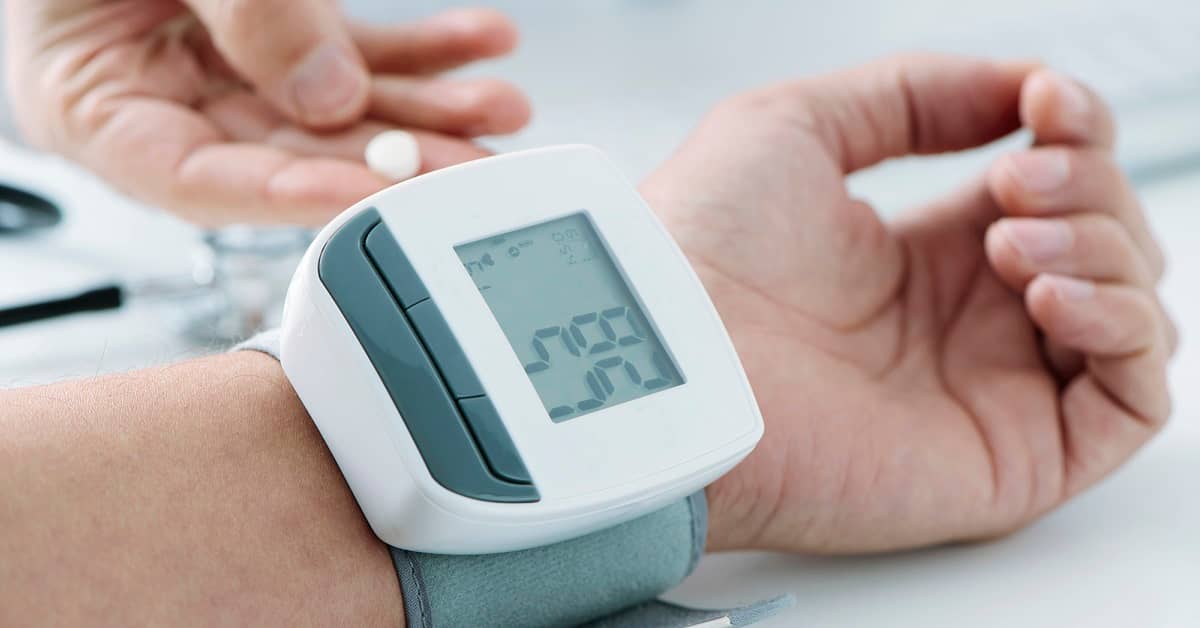
High blood pressure or hypertension gets a lot of attention because it’s linked with a higher risk of heart attack, stroke, and a slew of other health concerns. But very few people understand the dangers of the other side of the spectrum: low blood pressure, which is also known as hypotension.
Read on and I’ll offer some important insights into this little-known issue…
Before we can talk about low blood pressure—or even high blood pressure—we need to talk about optimal blood pressure numbers.
As you may recall, blood pressure is the force of blood pushing against the walls of your arteries as your heart pumps blood. It’s usually described as two numbers: systolic and diastolic. The numbers record blood pressure in millimeters of mercury (mm Hg), with systolic listed above diastolic.
Healthy Blood Pressure
According to the National Heart Lung and Blood Institute,1 for most adults a healthy blood pressure is less than 120/80 mm Hg. Low blood pressure is blood pressure that is lower than 90/60 mm Hg.
These numbers are controversial. Personally, I think you’re pretty safe with blood pressure as high as 140 (my opinion, not the medical profession’s.) But this article is on LOW blood pressure so let’s stick to that.
Of course, your blood pressure fluctuates during the day. Much like a thermostat balances the temperature of your home to keep you comfortable, your body has a built-in system to keep your blood pressure stable.
Some people have low blood pressure all the time, and it is business as usual with no problems. However, for others, abnormally low blood pressure can cause dizziness and other issues.
Have you ever gotten up from a chair quickly and felt woozy? Chances are a dip in blood pressure is responsible.
This sudden dip is known as orthostatic hypotension. Basically, it occurs when not enough blood is getting to your brain, which can lead to dizziness, lightheadedness, blurred vision, and loss of concentration.
What Causes Orthostatic Hypotension?
There are plenty of factors that can mess with your body’s built-in blood pressure regulatory system, including aging and certain medications.
According to Harvard Medical School,2 about five percent of people younger than 50 have orthostatic hypotension, but the prevalence rises to 30 percent over age 70.
This is not surprising since as people age, arteries throughout the body become stiffer, and our body’s blood pressure-monitoring sensors may become less sensitive. (Similar observations apply to hypertension). Some people can't respond to blood pressure drops as effectively—particularly if their blood pressure is high.
Besides that, many commonly prescribed and even over-the-counter medications can worsen orthostatic hypotension.
“Common culprits include beta blockers (which reduce heart rate) and alpha blockers used in men to treat an enlarged prostate,” Harvard Medical School reports. “Cold and allergy drugs—especially diphenhydramine (Benadryl)—and most antidepressants can also contribute to the problem.”
To further exacerbate the blood pressure problem, people may lose their sense of thirst as they age, and dehydration makes blood pressure control more difficult.
Additionally, diabetes and other diseases, such as Parkinson's disease, may also cause orthostatic hypotension.
There are other types of low blood pressure, including low blood pressure after eating, which is known as postprandial hypotension.
Dealing With Blood Pressure “Lows”
If you believe your blood pressure is too low, check with a trusted healthcare provider to determine if there is cause for alarm.
Sometimes it’s not a cause for concern. However, if it’s causing annoying or dangerous symptoms, you can may want to try these simple steps to help avoid future lows in your blood pressure.
- Eat salt. This can help increase blood pressure. And you don’t have to load up with processed foods, either. Try adding naturally smoked fish, olives, broth or salted nuts to your diet.
- Drink more water to help increase blood volume.By staying hydrated, you can ensure there is enough fluid in your body to support a strong blood supply and to help your tissues and organs work the way they should.3
- Go slow and pay attention to body positions.4 Medical experts caution against sitting and standing up quickly as well as standing for long periods of time, which can all trigger low blood pressure symptoms.
- Eat foods that can help5: Besides staying hydrated, certain foods can help raise your blood pressure. Try foods high in vitamin B-12, such as eggs, fortified cereals and beef. Also, foods high in folate (asparagus and garbanzo beans) can help, too. Drinking licorice tea can help increase blood pressure rates, according to one study.6
Whether you’re worried about low blood pressure, high blood pressure, or you’ve had no blood pressure problems at all, everyone can benefit from having their blood pressure checked regularly. If you experience any blood pressure highs or lows, I recommend addressing them with a sensible diet and exercise program.
Stem Cell Restore
Increased Energy from Organic Tibetan Sea Buckthorn Trans-Resveratrol, Vitamin D

